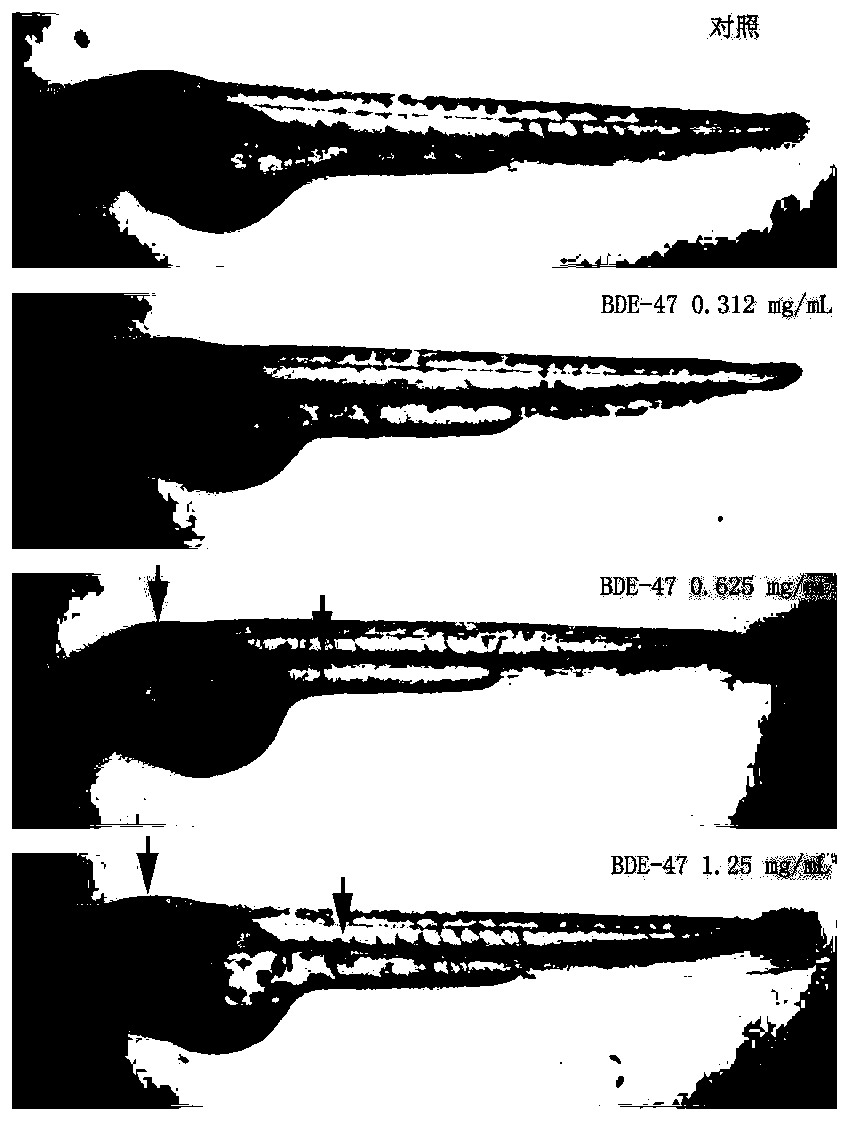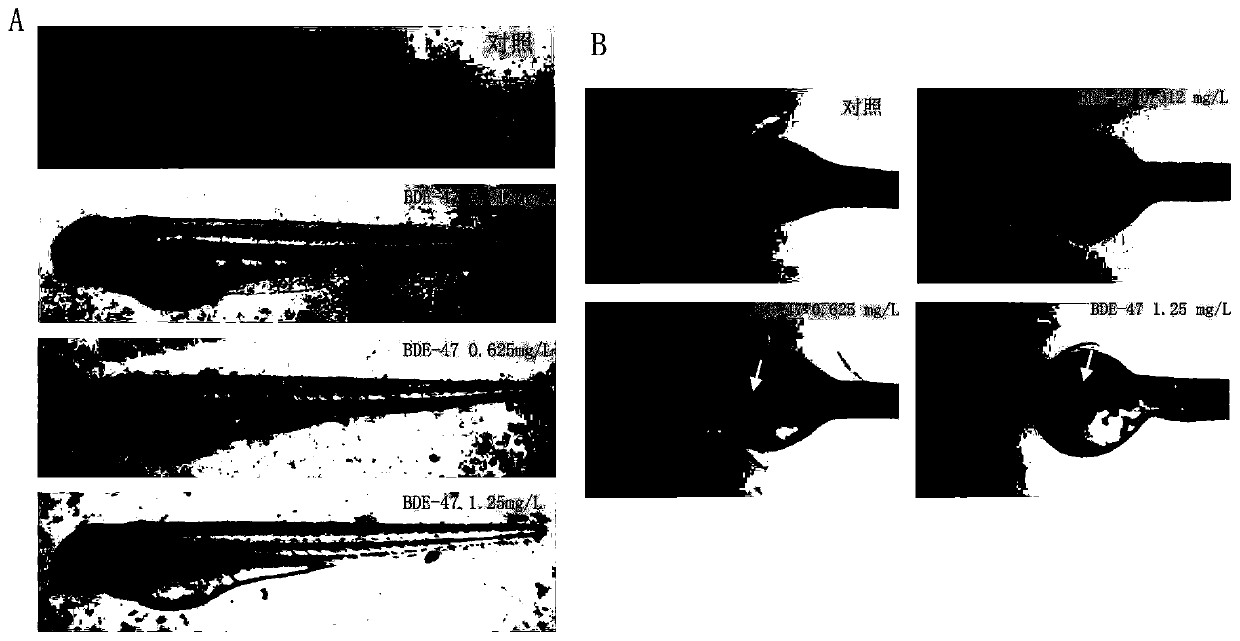Method of evaluating developmental toxicity of polybrominated diphenyl ethers
A polybrominated diphenyl ether and toxicity technology, applied in the field of toxicology detection, can solve the problems of intuition and high research cost, and achieve the effects of easy observation, reduction of test cost, and improvement of efficiency
- Summary
- Abstract
- Description
- Claims
- Application Information
AI Technical Summary
Problems solved by technology
Method used
Image
Examples
Embodiment 1
[0033] Zebrafish Feeding Management
[0034] (1) Zebrafish rearing: zebrafish are raised in a culture tank with a constant temperature circulating water system, wherein the culture water in the culture tank is tap water heated by aeration, and the water temperature in the culture tank is 28±0.5 ℃, the dissolved oxygen in the water is greater than 6.0mg / L, the pH is 7.0-8.0, and the light cycle of 14h light / 10h dark is maintained. Freshly hatched Artemia were fed from 7:00 to 9:00, 14:00 to 15:00, and 19:00 to 20:00 every day.
[0035] (2) Breeding method of Artemia: add 1000mL of water, 20g of sea salt, 0.7g of NaHCO to the hatching bottle 3 And 2.5g of Artemia eggs, put it into an artificial climate box, and maintain a constant temperature of 28±0.5℃. Open the air valve and inflate the device, so that the eggs of Artemia are in a state of tumbling motion, and the incubation time is 24-30 hours. Close the air valve and let it stand until the Artemia is fully charged to the ...
Embodiment 2
[0037] Selection of zebrafish embryos
[0038] (1) At 8:30 the night before egg retrieval, use a fishing net to move the adult zebrafish to the spawning box in a ratio of 1:1, and the water in the spawning tank is zebrafish breeding water. The spawning box was placed in an artificial climate box at 28 ± 0.5 °C for overnight incubation, and the light was turned on at 6:30-7:30 the next morning to allow the female and male to mate naturally, and fertilized eggs were collected after 15 minutes.
[0039] (2) Place the fertilized eggs in a plate, and use a plastic-tip dropper to clean up feces and impurities. Select normally developing embryos under a stereoscope, rinse with embryo culture medium twice, add embryo culture medium and transfer to culture in an artificial climate box at 28±0.5°C for 4h.
Embodiment 3
[0041] Preparation of BDE-47 solutions with different concentrations:
[0042] (1) Mother liquor preparation: Dissolve 25mg BDE-47 in 5mL dimethyl sulfoxide (DMSO), add 495mL embryo culture medium, and prepare BDE-47 mother liquor (50mg / L);
[0043] (2) Preparation of stock solution: Take 100 mL of BDE-47 stock solution and add 900 mL of embryo culture medium to prepare BDE-47 stock solution (5 mg / L).
[0044] (3) Working solution preparation: take 25 mL of BDE-47 stock solution, add 75 mL of embryo culture medium, and prepare a BDE-47 solution with a concentration of 1.25 mg / L. Take equal volumes of 1.25mg / L BDE-47 solution and embryo culture medium, and mix to prepare 0.625mg / L BDE-47 solution. Take equal volumes of 0.625 mg / L BDE-47 solution and embryo culture medium, and mix them to prepare 0.312 mg / L BDE-47 solution.
PUM
| Property | Measurement | Unit |
|---|---|---|
| Absorbance | aaaaa | aaaaa |
Abstract
Description
Claims
Application Information
 Login to View More
Login to View More - R&D
- Intellectual Property
- Life Sciences
- Materials
- Tech Scout
- Unparalleled Data Quality
- Higher Quality Content
- 60% Fewer Hallucinations
Browse by: Latest US Patents, China's latest patents, Technical Efficacy Thesaurus, Application Domain, Technology Topic, Popular Technical Reports.
© 2025 PatSnap. All rights reserved.Legal|Privacy policy|Modern Slavery Act Transparency Statement|Sitemap|About US| Contact US: help@patsnap.com



